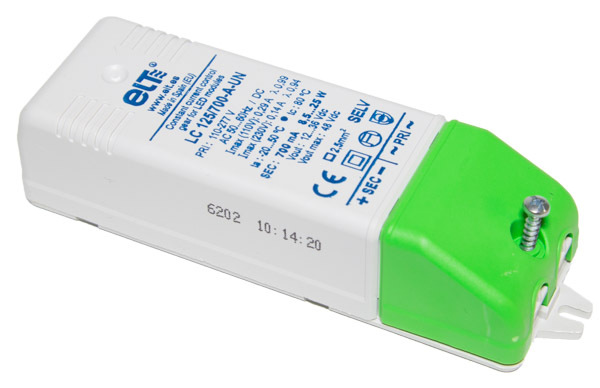ETT Driver
Aug 17, 2015 The Medical Expert Panel (MEP) recommends that the currently used definition for abnormal exercise tolerance testing (ETT) should be revised so that it is defined as an inability to exceed 6 METS (metabolic equivalents) on ETT. Section 2: CMV drivers with known chronic heart disease. How do I know which paper or media type to select in my product's driver? I'm having paper feed problems. What should I do? Does the type of paper I use make a difference? How should I load envelopes? How do I create a custom paper size for my product in Windows? Which type of paper can I print on? Can the product print on CDs and DVDs? Tech support scams are an industry-wide issue where scammers trick you into paying for unnecessary technical support services. You can help protect yourself from scammers by verifying that the contact is a Microsoft Agent or Microsoft Employee and that the phone number is an official Microsoft global customer service number.

Professional Reference articles are designed for health professionals to use. They are written by UK doctors and based on research evidence, UK and European Guidelines. You may find the Exercise Tolerance Testing (ETT) article more useful, or one of our other health articles.
Treatment of almost all medical conditions has been affected by the COVID-19 pandemic. NICE has issued rapid update guidelines in relation to many of these. This guidance is changing frequently. Please visit https://www.nice.org.uk/covid-19 to see if there is temporary guidance issued by NICE in relation to the management of this condition, which may vary from the information given below.
Exercise Tolerance Testing
In this article
Synonyms: include exercise ECG testing, treadmill testing, exercise stress test
Trending Articles
Chest pain is a common presentation both to general practitioners and to A&E departments.[1] Often one of the main differentials is cardiac chest pain and ruling this out in patients who might be otherwise well or only have one or two cardiac risk factors, can be difficult. Exercise tolerance testing (ETT) is one method which is used to determine the presence of significant coronary heart disease.
ETT has been quoted as having a sensitivity of 78% and a specificity of 70% in detecting coronary artery disease (CAD).[2] Thus, a negative test may not necessarily be true and further testing or advice may be warranted. Diagnostic accuracy is also poor in women and this may relate to smaller heart size.[3] For this reason, ETT is being superseded by cardiac imaging techniques, such as myocardial perfusion scans, in some centres. Even so, ETT can be valuable when performed in selected patients and the following criteria have been suggested:[4]
- Ability to exercise.
- Normal baseline 12-lead ECG.
- No previous cardiac revascularisation.

Indications for exercise tolerance testing

- Diagnosis of coronary heart disease (keeping in mind the high number of false positives and false negatives).
- Assessment of 'fitness' in certain occupations and medical condition - eg, the police force and some cardiomyopathies.
- Arrhythmias - ETT can help to record arrhythmias which are provoked by exercise (but only in those with non-life-threatening arrhythmias).
Most patients with suspected angina were traditionally referred for exercise ECG testing. Exercise ECG testing has a relatively high sensitivity but only moderate specificity for the diagnosis of CAD. A normal exercise test may reassure many patients but it does not exclude a diagnosis of CAD.[5] The 2010 National Institute for Health and Care Excellence (NICE) guidance for patients presenting with chest pain recommends that exercise ECG should not be used to diagnose or exclude stable angina for people without known CAD.[6]
The NICE guidance also states that, for people with confirmed CAD (eg, previous myocardial infarction, revascularisation, previous angiography), non-invasive functional testing should be offered when there is uncertainty about whether chest pain is caused by myocardial ischaemia, and that exercise ECG may be used instead of functional imaging.[6]
What the exercise tolerance test involves
- ETT consists of exercising on a treadmill following a defined protocol, the Bruce protocol, over approximately 20 minutes. The test begins gently and gradually the level of intensity is increased through a combination of increased treadmill speed and incline.
- Intensity of exercise is measured in metabolic equivalents (METs) where 1 MET is the amount of energy expended at rest or 3.5 ml oxygen per kilogram per minute.
- The test is divided into seven stages of three minutes and there is also a less strenuous version called the modified Bruce.
- ECG is recorded throughout and blood pressure measured intermittently.
- ETT might be prematurely stopped for any of the following: development of chest pain, presence of ST elevation, very deep, 2 mm or more, ST depression, arrhythmias, hypotension or if the patient becomes tired and is unable to continue. In addition, elevation of blood pressure to dangerous levels such as >250/115 mm Hg should also lead to termination of the test.
- Beta-blockers and digoxin can interfere with the results so are usually stopped before the ETT.
Contra-indications to exercise tolerance testing
- Chest pain at rest or at night.
- Any condition where left ventricular output is reduced - eg, aortic stenosis or hypertrophic obstructive cardiomyopathy (HOCM).
- Active systemic illness.
- Abnormal baseline ECG (eg, bundle branch block patterns or left ventricular hypertrophy); these make interpretation of the ETT difficult.
- Suspected or confirmed life-threatening arrhythmias.

Interpreting the exercise tolerance test
- ST elevation - usually this will be picked up straightaway and dealt with.
- The patient is normally considered to have been adequately 'stressed' if they achieve 85% or more of their maximum heart rate (calculated as 220 - age in years for men and 210 - age for women). However, recent data suggest that using these criteria to terminate the test may lead to an underestimation of inducible ischaemia.[7]
- At each stage each lead should be examined for:
- Planar ST depression (this can be difficult to delineate from depression of the J point, which is the point where the QRS complex meets the ST wave).
- 'Flipping' of the T waves.
- Arrhythmias.
- Examination of all leads should continue into the recovery stage after the exercise stage of the test has been completed.
Complications
These are rare but can be fatal - eg, myocardial infarction, left ventricular rupture, ventricular fibrillation or ventricular tachycardia.
Following up an abnormal exercise tolerance test
- Referral to cardiologists if an adequate ETT was undertaken and is abnormal.
- If an inadequate test was performed, further non-invasive investigations may be indicated, such as myocardial perfusion scanning, cardiac MRI, or stress echocardiogram. These are usually requested by the cardiologists, so a referral or discussion may be needed.
Ette River
Fitzgerald P, Goodacre SW, Cross E, et al; Cost-effectiveness of point-of-care biomarker assessment for suspected myocardial Acad Emerg Med. 2011 May18(5):488-95. doi: 10.1111/j.1553-2712.2011.01068.x.
Megnien JL, Simon A; Exercise tolerance test for predicting coronary heart disease in asymptomatic Atherosclerosis. 2009 Aug205(2):579-83. Epub 2008 Dec 31.
Siegler JC, Rehman S, Bhumireddy GP, et al; The accuracy of the electrocardiogram during exercise stress test based on heart size. PLoS One. 20116(8):e23044. Epub 2011 Aug 17.
Miller TD; Stress testing: the case for the standard treadmill test. Curr Opin Cardiol. 2011 Sep26(5):363-9.
Management of stable angina; Scottish Intercollegiate Guidelines Network - SIGN (2007)
Chest pain of recent onset; NICE Clinical Guideline (March 2010, updated Nov 2016)
Jain M, Nkonde C, Lin BA, et al; 85% of maximal age-predicted heart rate is not a valid endpoint for exercise J Nucl Cardiol. 2011 Dec18(6):1026-35. Epub 2011 Sep 16.
Related Information
I was diagnosed a year ago, after a million visits over 7 months, with Helicobacter Pylori and a hiatal hernia. At the time I had only strong nausea, vertigo and throwing up. I was prescribed...
Health ToolsEtt New Driver
Feeling unwell?
New Driver Ett Sl
Assess your symptoms online with our free symptom checker.
